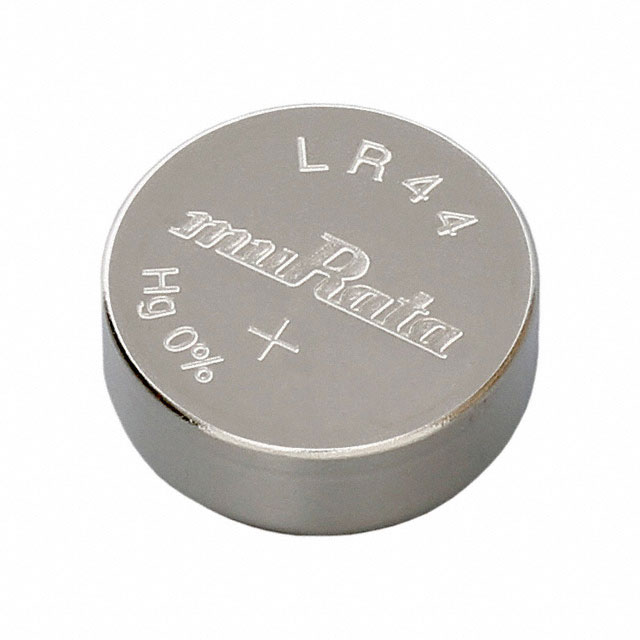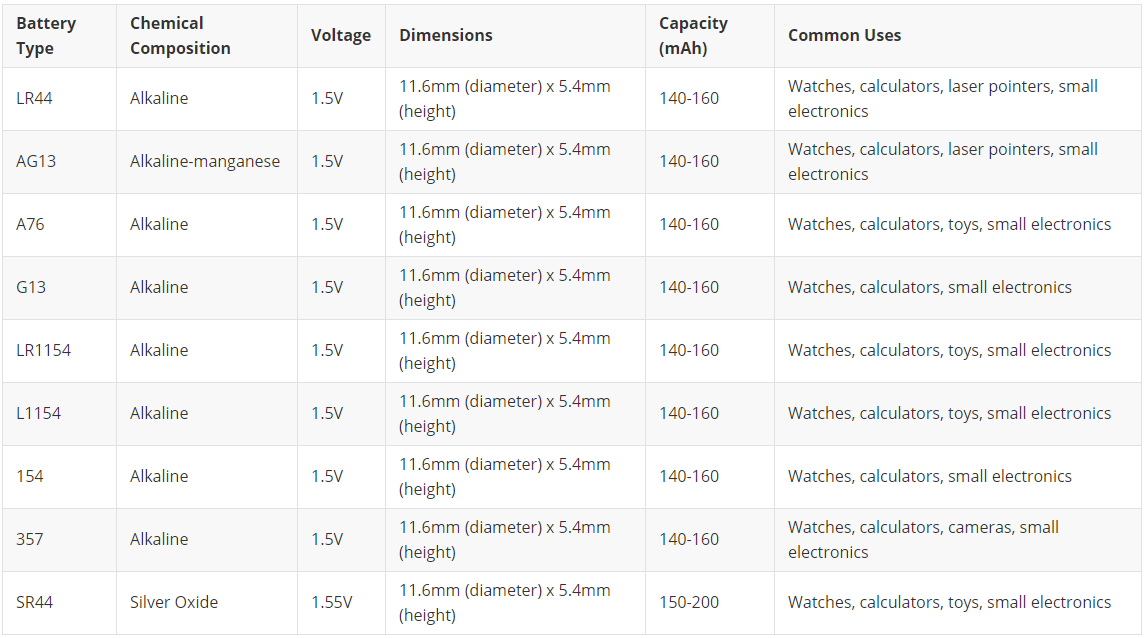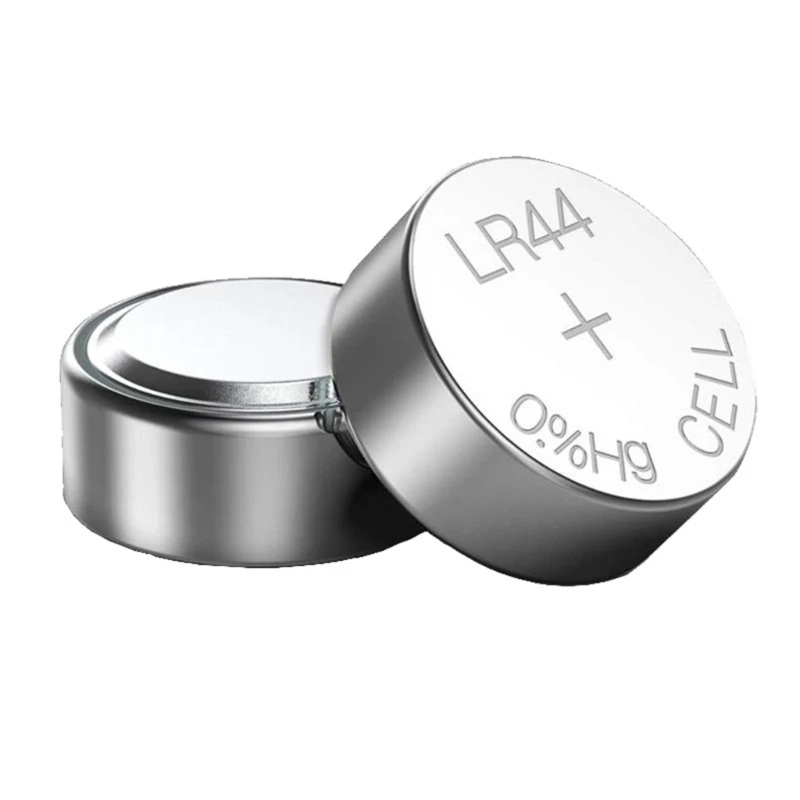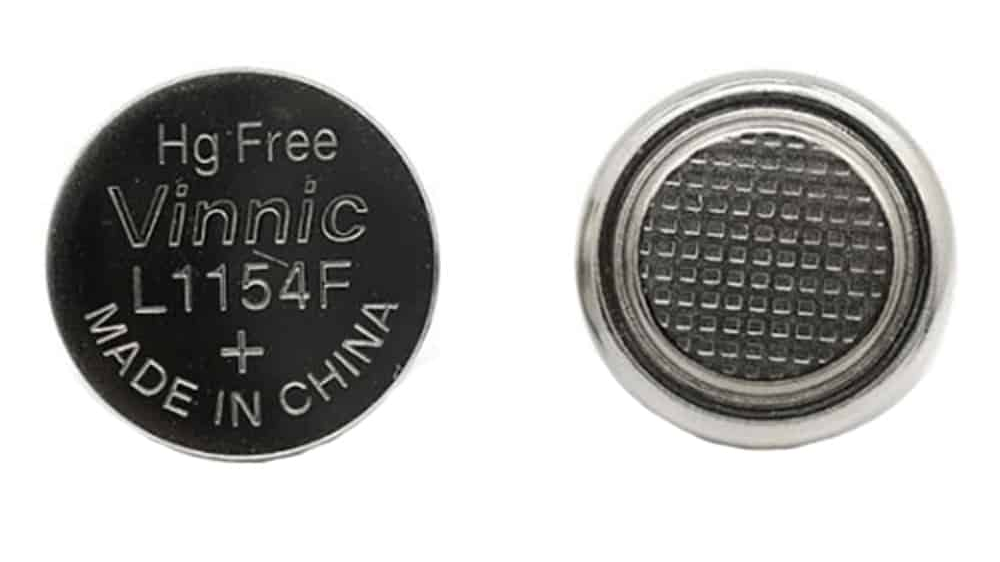LR44 Battery Overview
The LR44 lithium battery is a button cell battery that belongs to the alkaline battery category. Its voltage is 1.5V and is dimensionally the same as a silver oxide coin cell (such as the SR44) (approximately 11.6mm in diameter and 5.4mm in height), but has a different chemical composition and voltage. LR44 batteries are equivalent to several other battery models, such as A76, AG13, G13, LR1154, L1154 and 154, etc. This kind of battery is usually used in various electronic devices, so when choosing, you need to ensure that the voltage and size of the battery are compatible with the device to avoid damaging the device or affecting its normal operation.

LR44 Battery
Features:
1. Chemistry: Alkaline
2. Nominal Voltage: 1.5V
3. Diameter: 11.6mm
4. Height: 5.4mm
5. Capacity: Typically 150-160mAh
6. Operating Temperature Range: 0°C to 60°C
Is 357 and lr44 the same?
Yes, 357 and LR44 batteries are essentially the same. They have identical dimensions (11.6mm diameter x 5.4mm height) and the same nominal voltage of 1.5V. Both are alkaline button cell batteries and can be used interchangeably in most devices that require either of these battery types.
The different names (357 and LR44) are simply due to various naming conventions used by battery manufacturers. Some other common names for the same battery type include:
So, if your device requires an LR44 battery, you can safely use a 357 battery as a direct replacement, and vice versa.
Equivalent batteries for LR44 batterie
Alternatives and equivalent batteries for LR44 batteries include A76, AG13, G13, LR1154, L1154 and 154, etc. Although these equivalent batteries all have the same features and size, there are some differences, below is the lr44 battery equivalent chart:

LR44 Battery Equivalent Chart
AG13:
AG13 batteries are one of the most common alternative names for LR44 batteries, sharing the same physical dimensions and similar performance characteristics. They can be used as a replacement for LR44 batteries in most devices. AG13 batteries are alkaline-manganese batteries with a voltage of 1.5V and dimensions of 11.6mm (diameter) x 5.4mm (height). They have a capacity of approximately 140-160 mAh and are commonly used in watches, calculators, laser pointers, and other small electronic devices.
A76:
A76 is another alternative name for LR44 battery and can be used as a substitute in devices that require LR44. They have the same voltage and dimensions, making them interchangeable.
A76 batteries are alkaline batteries with a voltage of 1.5V and dimensions of 11.6mm (diameter) x 5.4mm (height). They have a capacity of approximately 140-160 mAh and are commonly used in watches, calculators, toys, and other small electronic devices.
G13:
G13 batteries are another equivalent to LR44 lithium batteries, with identical dimensions and voltage. They can be used as a direct replacement for LR44 batteries in various devices.
G13 batteries are alkaline batteries with a voltage of 1.5V and dimensions of 11.6mm (diameter) x 5.4mm (height). They have a capacity of approximately 140-160 mAh and are commonly used in watches, calculators, and other small electronic devices.
LR1154 and L1154:
LR1154 and L1154 batteries are equivalents to LR44 batteries, sharing the same physical dimensions and electrical specifications. They can be used interchangeably with LR44 batteries in most applications.
LR1154 and L1154 batteries are alkaline batteries with a voltage of 1.5V and dimensions of 11.6mm (diameter) x 5.4mm (height). They have a capacity of approximately 140-160 mAh and are commonly used in watches, calculators, toys, and other small electronic devices.
154:
154 batteries is another alternative name for LR44 battery. 154 batteries are alkaline batteries with a voltage of 1.5V and dimensions of 11.6mm (diameter) x 5.4mm (height). They have a capacity of approximately 140-160 mAh and are commonly used in watches, calculators, and other small electronic devices.
357:
357 batteries are equivalent to LR44 batteries and can be used as a direct replacement. 357 batteries are alkaline batteries with a voltage of 1.5V and dimensions of 11.6mm (diameter) x 5.4mm (height). They have a capacity of approximately 140-160 mAh and are commonly used in watches, calculators, cameras, and other small electronic devices.
SR44 (Silver Oxide):
SR44 batteries are silver oxide batteries with a voltage of 1.55V and dimensions of 11.6mm (diameter) x 5.4mm (height). They have a capacity of approximately 150-200 mAh and are commonly used in watches, calculators, toys, and other small electronic devices. While they can be used as a replacement for LR44 batteries in some devices, it's essential to check the device's specifications for compatibility.
Distinguish the positive and negative poles of lr44 battery

LR44 battery negative(left) and positive(right) terminals
You can distinguish the positive and negative poles of the LR44 battery by looking at the identification mark on the battery, observing the shape and color of the battery, and testing with a multimeter.
Look for the identification mark on the battery: Typically, the positive terminal of a battery will be marked with a "+" symbol and the negative terminal with a "-" symbol, or with "POS" and "NEG."
Observe the shape and color of the battery: In many coin batteries, the positive electrode is usually on the flat, smooth side, while the negative electrode is on the other side of the battery. Some batteries have a red, orange or black positive terminal and a blue, green or white negative terminal.
Test using a multimeter: Connect the positive and negative terminals of the multimeter to the two terminals of the battery. If the multimeter shows positive voltage, the terminal connected to the positive terminal is the positive terminal of the battery.
Applications:
The LR44 has several advantages that make it ideal for applications that require a small but stable battery. Common uses for LR44 are listed below.
1. Watches and clocks
2. Calculators
3. Small electronic toys and games
4. Laser pointers
5. Digital thermometers
6. Medical devices (e.g., glucose meters)
7. Small flashlights
8. Pedometers
9. Remote controls
10. Other small electronic devices
Advantages:
Various advantages of LR44 batteries are as follows:
1. Readily available and affordable
2. Compact size
3. Reliable performance
4. Long shelf life (up to 5 years)
5. Good performance in a wide temperature range
6. There are many similar and equivalent batteries available as replacements for the LR44
LR44 has many equivalent and similar batteries that can be replaced. Coupled with its own unique advantages, it has become the first choice for many electronic projects.
The difference between LR44 battery and L1154F battery

LF1154F Battery front(left) and reverse(right)
LR44 vs L1154F: Chemical Composition
LR44 battery: Silver oxide battery. The battery uses silver oxide as the positive electrode, metal zinc powder as the negative electrode, and the electrolyte is potassium hydroxide or sodium hydroxide.
L1154F battery: It is a lithium-manganese disposable button battery with a nominal voltage of 3V, a termination voltage of 2V, and a typical operating current of 0.1-0.2mA.
LR44 vs L1154F: Different principles
LR44 battery: generates electrical energy through the chemical reaction of zinc and silver oxide.
L1154F battery: Use manganese dioxide with very stable chemical properties as the positive electrode material, and lithium metal with very high specific energy as the negative electrode material. The annual average capacity reduction is no more than 2%, and the storage life is long.
LR44 vs L1154F: Different characteristics
The battery has the characteristics of long service life and large capacity. It is widely used and has the largest application volume.
L1154F battery: It adopts semi-sealed structure and is safe to use. Lithium-manganese disposable button batteries have a wide temperature adaptability range and can work normally under the conditions of -20 to +60 degrees Celsius.
Frequently Asked Questions
1. Which one is bigger, LR41 battery or LR44 battery?
The diameter of the LR41 battery is approximately 7.9 mm and the height is approximately 3.6 mm. The diameter of the LR44 battery is approximately 11.6 mm and the height is approximately 5.4 mm. Therefore, in terms of size, LR44 batteries are larger than LR41 batteries.
2. What is the difference between LR44H and LR44 batteries?
LR44H refers to the higher capacity version of the LR44 battery, LR44H offers longer life, they have the same size and voltage, which means they are equivalent in physical size and voltage output. Mutually replaceable batteries.
3. Can LR44 battery replace lr54 battery?
LR44 batteries cannot directly replace LR54 batteries. Although the voltage and diameter of both batteries are the same (both 1.5 volts and 11.6mm), the battery height of the LR44 is 5.4mm and the height of the LR54 is 3.1mm. The LR44 may not fit some devices designed to accept LR54 batteries.
4. Can LR44 batteries be recharged?
No, the LR44 is a disposable alkaline battery and cannot be recharged. Attempting to charge a non-rechargeable battery may cause the battery to leak, be damaged, or even cause a dangerous chemical reaction.
5. What is the standard voltage of LR44 battery?
The standard voltage of LR44 batteries is 1.5 volts. This is the common voltage for most alkaline coin cells.
6. How long is the life of the LR44 battery?
The life of an LR44 battery depends on a variety of factors, including battery brand, storage conditions, and load conditions during use. Under normal usage conditions, LR44 batteries can last anywhere from a few months to a year. High-load applications (such as high-brightness LED devices) will shorten battery life.
7. How long can LR44 batteries be stored?
Under the correct storage conditions, unused LR44 batteries can typically be stored for 2 to 3 years without losing too much power. To maximize storage life, batteries should be stored in a dry, moderate temperature environment away from extreme temperatures.
8. What are the alternatives to LR44 batteries?
There are several common replacement models for LR44 batteries, including AG13, L1154, A76, 357, etc. These batteries are size and voltage compatible with LR44, but there may be minor performance differences between brands and manufacturers.
9. What devices can LR44 batteries be used on?
LR44 batteries are widely used in a variety of small electronic devices, such as watches, calculators, small toys, some types of digital thermometers, remote controls, and some flashlights and LED lighting fixtures.